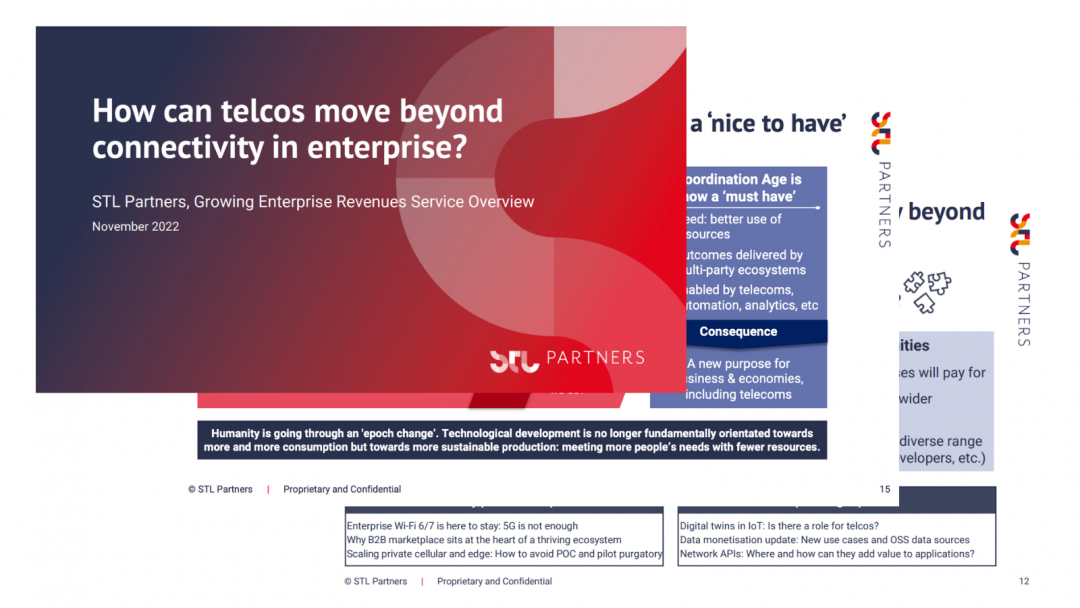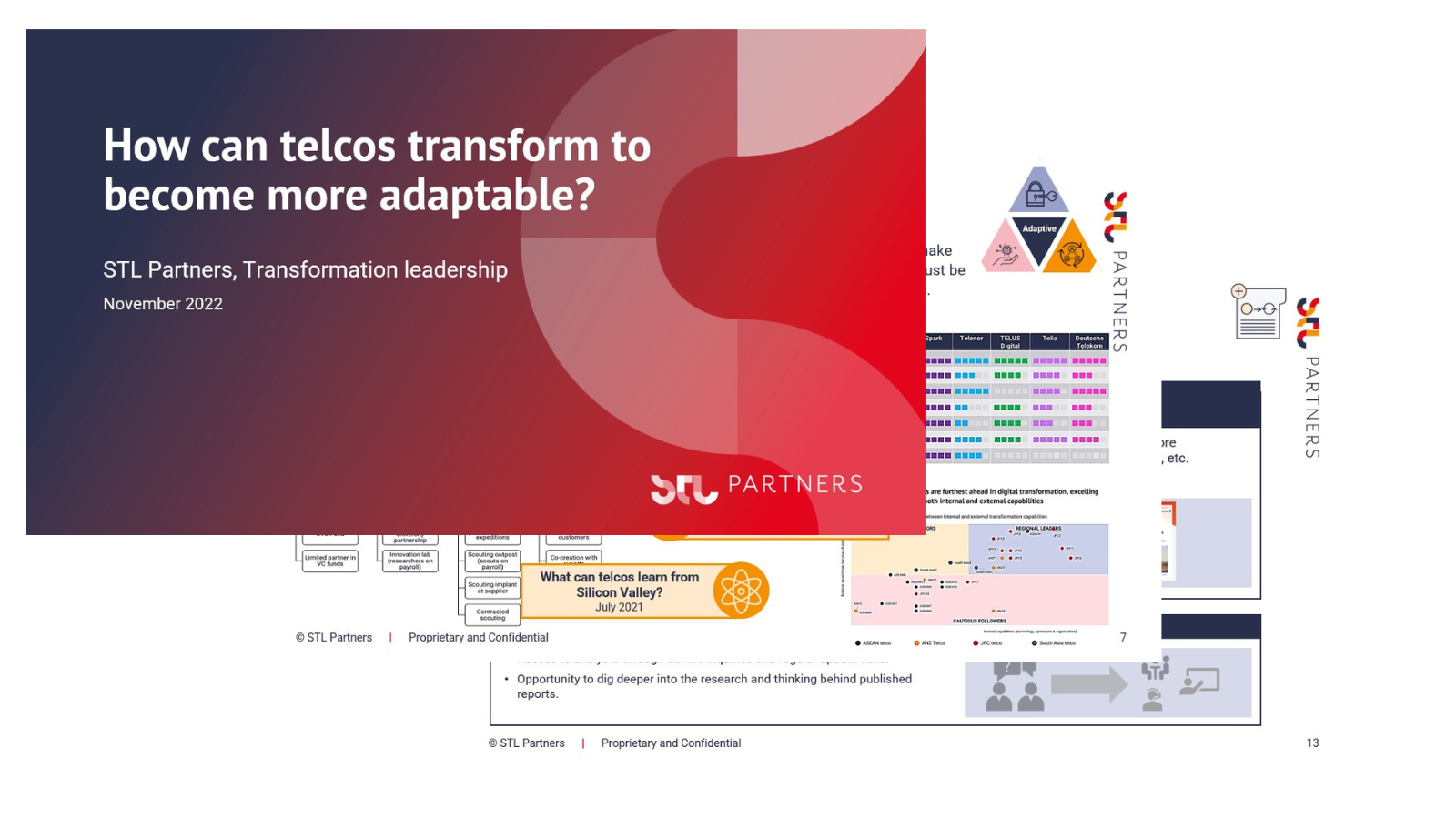
Eight barriers telcos face in achieving network convergence
Network convergence is not a new concept and is one that has been consistently explored and often pursued by CSPs for many years. Convergence has been seen as a means of reducing costs and operational complexity while network divergence was used to support innovation, given the challenges with traditional appliance-based technologies. However, speed and specificity have been the major force of network divergence.
STL Partners report Revisiting convergence: How to address the growth imperative shows how the move to cloud native networking and increasing network disaggregation operators no longer have to compromise between network convergence and divergence and that the telecoms industry is now moving towards building a network as a common platform that can serve multiple needs and provide more tailored products and services.
This latest STL Partners’s report is based on an interview programme with 12 leaders from telecoms operators globally, conducted between July and September 2021. The participant group spans across different regions, operator types and roles within the organisation.
Our research found many CSPs do consider the various forms of convergence (logical, horizontal, vertical) to be desirable (and in some cases even inevitable) but its is something they have at best only partially been able to undertake to date.
Here are eight of the most common challenges CSPs face in their network convergence journey:
Barriers CSPs face

Source: STL Pa
- Legacy infrastructure and investments – Heterogenous legacy technical infrastructure can arise for many reasons. Mostly this is because technologies were introduced at a time when independent silos were the only (or the only expedient) way to introduce new services. Operators put in completely new network stacks for new services. However, heterogenous infrastructure can also arise through acquisitions. One cable operator we spoke to had to grapple with multiple network architectures, topologies and technologies as a result of industry consolidation.
- Organisational skills, culture and processes Beyond the technical challenge, the existence of (fiercely independent) distinct teams and skillsets within the CSP add another layer of difficulty to the task of convergence. In many instances, the teams are under different leadership, with separate training backgrounds, ideals, and targets. In some extreme situations, the operator has been split into completely individual organisations, with each having little to no interaction with the other.
- Ownership, governance and fiefdoms…or historic reasons – Some operators have complex shareholding and ownership arrangements. For example, the fixed line consumer business is 100% owned by a single entity but the mobile business has minority shareholders or the mobile network / mobile operations are a joint venture with a competing operator. One Asian operator we spoke to… [Download report]
- Legacy services and commercial constraints – Some operators have declining, yet still sizeable and profitable services such as ISDN or 2/3G services. Although there is little or no new investment in these legacy services, they incur ongoing licensing, operating and maintenance costs. They also represent a growing risk, particularly if they are no longer supported by vendors. There are also some ‘raw’ services that are thriving which are hard or impossible to support within a convergence network. For example, a wholesale operator we interviewed…[Download report]
- Regulation and compliance – Some licensing terms for public communications services stipulate that dedicated infrastructure be used for the service. Interpreted too literally, this could preclude certain forms of network convergence. Also, some authorities will want to satisfy themselves that any changes in the network do not raise a potential national security risk or limit their ability to fulfil their duties (e.g. lawful intercept). However, regulation or government influence is not always a barrier. As previously mentioned, in some cases, operators are still maintaining PSTN services but in others, there is government support for PSTN switch-off or copper network retirement, which will significantly impact legacy systems from railway points to elderly care alarms. This can act as a major catalyst of network convergence.
- Operator independence – Related to innovation cycles, one of the concerns raised by interviewees was that convergence may reduce operators’ flexibility and freedom to determine they own technology roadmap. This loss of optionality is seen as a form of vendor lock-in although not necessarily expressed in those terms. For operators that have been able to ‘back multiple horses’, convergence represents a commitment and a risk of making some potentially expensive mistakes. However, STL Partners argue that the disaggregation that comes with the adoption of cloud native networking means that maintaining operator independence and achieving convergence are not mutually exclusive.
- Investor valuation – One of our interviewees, the CEO of a global ICT solutions provider, pointed out that investors and investment analysts were not keen on convergence as this could blur the distinct data sets that informs their understanding of performance and feed their valuation models. The objection here is that introducing investments and costs that cannot be tied back to specific revenue lines can be a (intentional or unintentional) smokescreen that reduces transparency and creates reporting discontinuities. There is also an increasing interest and activity happening around delayering and structural separation (or ‘spin outs’) of different parts of the telco business, including operators looking to sell their tower assets or other network infrastructure components. This can undermine the ability to abstract convergence value.
- Disconnected technology innovation cycles – Different technologies evolve at different speeds and along different cycles and depreciation schedules. One of the objections raised by two separate interviewees (both European operators) was that convergence would delay adoption of the latest developments in previously independent technology cycle. For example, …. [Download report]
Our report Revisiting convergence: How to address the growth imperative will weigh up the various forms of network convergence and detail the four key drivers CSPs are now focused on as part of this renewed pursuit of network convergence.
Download this article as a PDF
Read more about growing enterprise revenues
Growing Enterprise Revenues overview pack
Our overview pack explores how the telecoms industry can leverage new business models to meet enterprise customer needs
Network APIs: Unlocking new value in the telco cloud
Network APIs may offer an answer to the question of how to monetise recent and upcoming telco cloud deployments. Virtualised networks upgrade APIs and enhance the value they offer to developers and customers. To unlock their potential, telcos should focus on optimising their commercial models.
Progress in telco cloud: How do we measure agility?
In the January 2023 update to our Telco Cloud Deployment Tracker, which was looking back at the entirety of calendar year 2022, we recorded an overall slowdown in deployments.
Network Futures overview pack
Our Network Futures Service provides a roadmap for new network ownership, regulation and partnership models, and insights. into new technologies, industry dynamics and new players.





